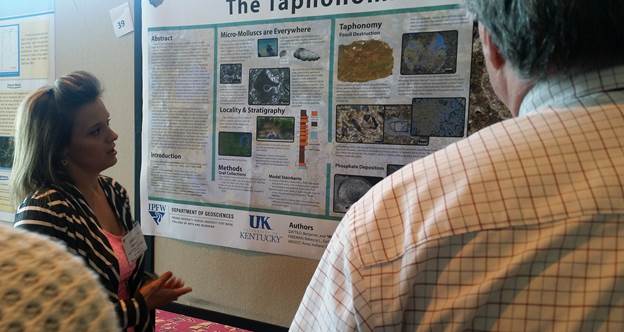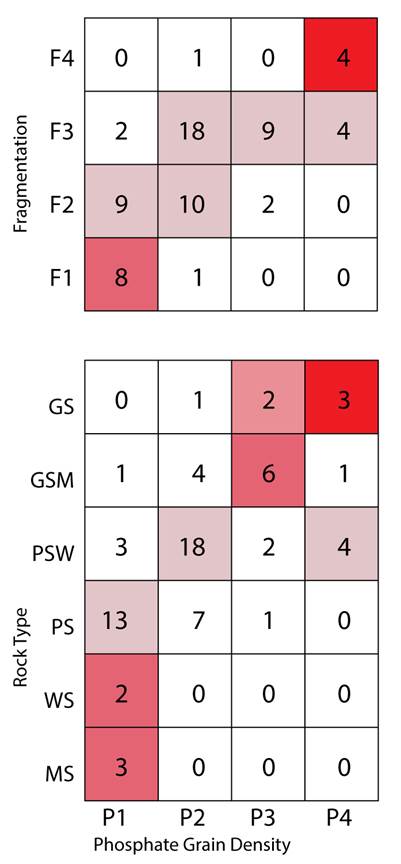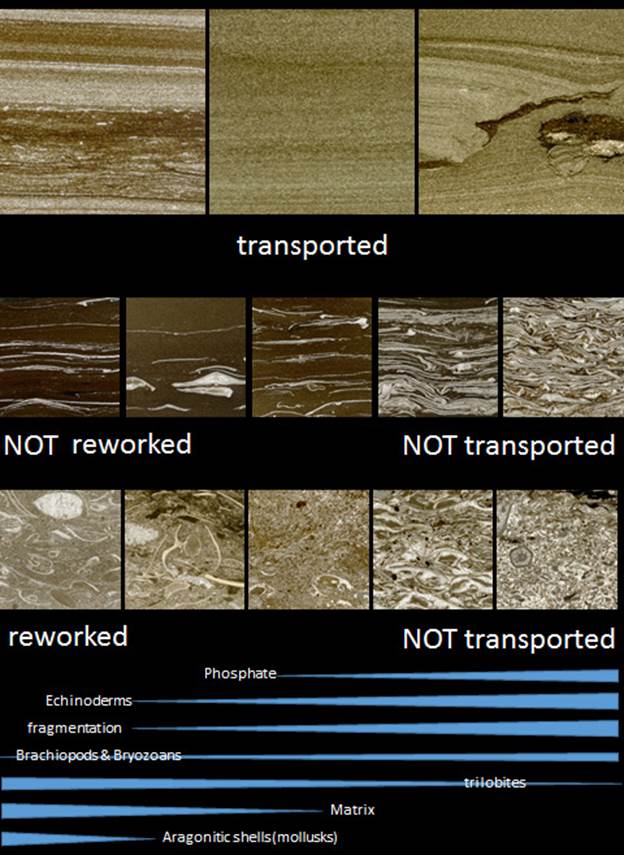Reports: UR855225-UR8: Do Cincinnatian (Ordovician) Phosphorites Result from Instrinsic Organic Burial Processes or Extrinsic Conditions?
Benjamin F. Dattilo, PhD, Indiana University-Purdue University (Fort Wayne)
This PRF grant has been essential to help students stay on track, finish their schooling, and gain employment and graduate school opportunities. To support more we utilize work study when possible.
Our institution is dominated by first generation students with responsibilities. They work 20 to 40 hours a week in low skill jobs. The grant has been leveraged to lift as many students out of this situation as possible and to help them interact professionally.
PRF research assistantships have helped keep the more at-risk students on campus longer, interacting with other students and faculty while meeting their financial needs. This has helped to keep students in school and speeds academic progress.
Three students conducted research projects and presented two papers each (a total of 6) at research conferences, including Annual and section meetings of the Geological Society of America as well as and eastern Section American Association of Petroleum geologists meeting. These student projects covered the topics of 1) ecological versus diagenetic features of the Graf, Iowa Elgin Member of the Maquoketa Formation, 2) the relationship between carbonate “maturity” and diagenetic phosphate, and 3) the origin of shell beds in the Point Pleasant black shales of Ohio.
We have had increasing success in connecting students to employment in the local region, and supported students have been particularly successful. While this may not be a direct result of PRF funding, the funding is part of an integrated effort to provide students with meaningful employment sooner in their careers.
Jessie Reeder presents her research on preservation-related size-bias in Ordovician phosphatic “small shellies”. At a GSA meeting.
Students supported by this grant measured, described and logged stratigraphic sections, collected samples, made thin sections, conducted petrographic analysis, and picked and identified microfossils.
Accomplishments and outcomes
To date PRF grant has allowed us to sample and make approximately 500 thin sections from 20 localities covering a stratigraphic interval of 250 meters. Material was collected by students in the field, by salvaging geotechnical borehole cores, and from MS and PhD dissertation collections. These samples, slabs, and thin sections have served as a foundation for the three student projects and are currently being used for further studies.
Size bias and geographic distribution of small shelly fossils
One of the most interesting results of the Graf, Iowa student project was to demonstrate that the famous Cambrian “small shelly faunas”, which are among the earliest animal fossils, are identical in preservation to the Ordovician phosphatic fossils. The Cambrian is by no means unique in containing “small shellies”. She also established that the smallness of these fossils was an artefact of biased preservation.
These phosphatic clam molds are the same size, but the lack of anatomical markers (color) show that some of them are incomplete molds of much larger individuals. This is a result of pore size limits of phosphate fillings.
Phosphogenesis and sediment “maturity”
Another study explored the relationship between diagenetic phosphate and limestone maturity. The hypothesis that diagenetic phosphate builds up in the sediments over time and is enhanced by reworking is consistent with the results. The prediction of this model is that more “mature” shell accumulations (accumulations showing signs of longer exposure at the water-sediment interface) would also be richer in accumulated phosphate. Indeed, fragmentation and lack of mud were associated with higher content of diagenetic phosphates, at least in a sub population of samples. A smaller subset of the samples remain free of phosphate no matter what the shell bed maturity. This is an intriguing clue to a necessary independent factor, perhaps basin chemistry, such as the availability of iron hydroxy-oxide derived from clay minerals, or even oceanic chemistry.
There is a strong relationship between the abundance of phosphate and fossil fragmentation or shell bed “maturity”.
The formation of diagenetic phosphate by chemical and sedimentological processes under an oxygenated water column supports the model of phosphogenesis powered by the oxidation of organic matter in a partially dysoxic sedimentary environment. Therefore the presence of diagenetic phosphate indicates the destruction of organic carbon. Furthermore, it supports the idea that shells accumulated in place and were not transported from an a shallow shelf to the deeper basin environment in which they were found. The student project on the Point Pleasant shales sought to document the occurrence of different shell bed types, their evolution and phosphate content. The study revealed several lines of evidence that the shell beds accumulated in place. This addresses a significant debate on the origin of shell beds in these black shales provides a valuable tool in evaluating the potential for preservation of organic carbon.
Lithologies from the black-shale interval at the base of the Upper Ordovician in the subsurface of Cincinnati. Only the finest carbonates are transported. Shell beds accumulated in place over time, and some were reworked.
Ongoing research in collaboration with with William Gilhooly at Inidiana University Purdue University Indianapolis is to investigate the relationship between sedimentary processes and geochemical signals in a small length of geotechnical core, relating this to the accumulation of phosphate. This research has involved undergraduates from both institutions.
PI career impacts
This research has resulted in two publications, 8 conference papers (including 6 student presentations), and a conference field trip.
In 2015 I was named as Indiana University Purdue University Fort Wayne College of Arts and Sciences Distinquished Lecturer based in part on this research line.
The results of this research are being parleyed into a research proposal to be submitted to the National Science Foundation this summer for expanded research on phosphogenesis in the Cincinnatian and its bearing on the question of the Cambrian small shellies.
















